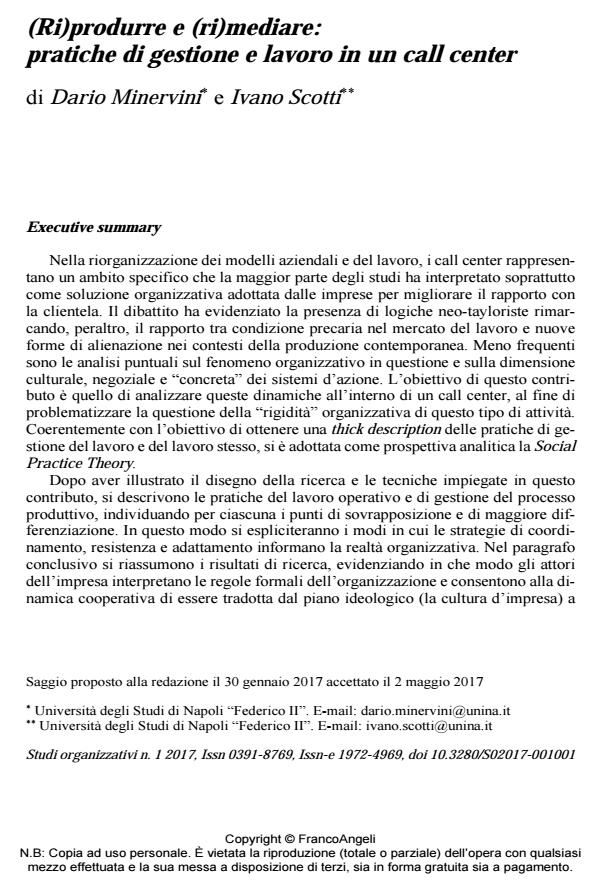(Ri)produrre e (ri)mediare: pratiche di gestione e lavoro in un call center
Journal title STUDI ORGANIZZATIVI
Author/s Dario Minervini, Ivano Scotti
Publishing Year 2017 Issue 2017/1
Language Italian Pages 31 P. 9-39 File size 299 KB
DOI 10.3280/SO2017-001001
DOI is like a bar code for intellectual property: to have more infomation
click here
Below, you can see the article first page
If you want to buy this article in PDF format, you can do it, following the instructions to buy download credits

FrancoAngeli is member of Publishers International Linking Association, Inc (PILA), a not-for-profit association which run the CrossRef service enabling links to and from online scholarly content.
In the reconfiguration process of the organizational and labour models, the call centres are a specific case, which studies have mainly considered as an organizational option adopted by companies in order to enhance the relationship with customers. Researches have highlighted a Neo-Taylorist work organization model in these contexts, and a relation between precariousness and new dynamics of alienation has been retraced. Only few studies have analysed these organizations from the cultural perspective, investigating the situated, "concrete" and negotiated systems of actions. The aim of the paper is to analyse these dynamics in a call centre in order to problematize the question of the organizational rigidity of this job context. The Social Practice Theory has been adopted as the analytical perspective, coherently with the aim to account a thick description account of the management and work practices. After describing theoretical and methodological aspects, research findings will be reported. In particular, it will be highlighted how actors interpret the formal rules of the organization and how it allows that the cooperative dynamics can be translated from the ideological level (corporate culture) to situated actions. This contributes to (re)producing and (re)arranging the organizational order.
Keywords: Call center, cooperation, situated action, social practice, work organization.
- An aesthetic account of space: A report on recent developments in organizational research Federica De Molli, in STUDI ORGANIZZATIVI 1/2019 pp.38
DOI: 10.3280/SO2019-001002
Dario Minervini, Ivano Scotti, (Ri)produrre e (ri)mediare: pratiche di gestione e lavoro in un call center in "STUDI ORGANIZZATIVI " 1/2017, pp 9-39, DOI: 10.3280/SO2017-001001